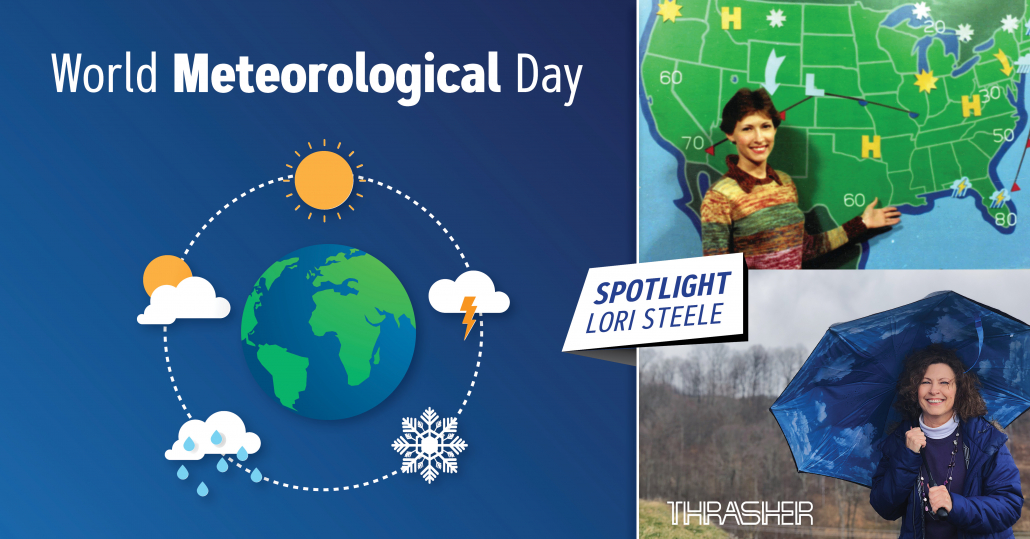World Meteorological Day
I have always liked numbers and trends of numbers. I have always liked looking at the sky. Those two things may seem unrelated, but meteorology combines both of them.
On a personal level, I love to see how the sky changes throughout the day. One of my favorite things is how the color of the sky changes with the color of the clouds and the time of day. When the sun is setting and the clouds turn pink or orange the blue sky becomes the color of turquoise. Of course there is more to see than just clouds. Rainbows are beautiful as well. Look to the east when the sun is shining after a late afternoon rain shower, and you will likely see at least part of a rainbow. Sometimes the sky can predict the weather too.
Weather observations include a number of atmospheric parameters such as recording the ambient temperature, the barometric pressure, and the wind speed and direction at a given place and time. That’s the numbers side of meteorology. There are two areas where I use those recorded values. Meteorological data is an integral part of air quality dispersion modeling. Data collected by the National Weather Service or from privately operated weather stations are used in the air quality models to predict downwind air pollution impacts from industrial processes. Air quality dispersion modeling is required for some types of air permit applications. It’s used to demonstrate that a new or modified source of air pollution will not cause or contribute to an exceedance of a national ambient air quality standard.
Another use of weather data is in forensic meteorology. Sometimes I look at precipitation events, and sometimes it’s the temperature. Not too long ago, a gas company was involved in a civil lawsuit because some people claimed their drilling activities caused a flood. A flood occurred, and there was property damage. A review of the rainfall data in the area revealed that a very significant amount of rain fell in a very short time period, and that was the cause of the flood. The activities of the gas company were deemed to not have been a factor in the property damage.
In another instance, water damaged an apartment while the tenants were away. It was initially thought that freezing temperatures caused a pipe to burst. A review of the temperature data around the time of the incident showed that the outside temperatures were not cold enough to have caused frozen pipes.
So, meteorology is not just forecasting the weather on television. I’ve used my interest in numbers and trends of numbers in my career as an air quality specialist. While my environmental division coworkers are looking at wetlands and streams, I’m looking up to the sky.
L ori Steele – Senior Air Quality Specialist
ori Steele – Senior Air Quality Specialist
Lori graduated from Penn State University with a Bachelor of Science in Meteorology in 1980. She brings over 30 years of air quality analysis and permitting experience to the Thrasher team. As an air quality specialist, she is able to use her love for numbers, analyzing climate and weather data and meteorology through air dispersion modeling and forensic meteorology. She has worked with both public and private organizations to provide clients in various industries these services, along with environmental compliance reporting. Lori’s experience gives her a unique perspective when working on projects and has been an extremely vital part of Team Thrasher.


